The future of in home care is transforming with new technologies and innovations. The importance of managing chronic diseases is growing, particularly in the context of aging populations and rising healthcare costs. Discover how smart home tech, AI, VR, and wearables are enhancing patient care and caregiver support in the sections below. The compound annual growth rate is a key metric for understanding the industry’s expansion potential.
Introduction to Home Health Care
Home health care is a vital aspect of the healthcare system, providing essential services to individuals in the comfort of their own homes. This approach to care has seen significant growth in recent years, driven by an aging population and an increasing demand for cost-effective, patient-centered care. Home health care services enable patients to receive medical care, rehabilitation, and support in their own homes, reducing the need for hospitalizations and institutional care.
Healthcare providers, including nurses, therapists, and physicians, play a crucial role in delivering high-quality home health care services that cater to the unique needs of each patient. The integration of technology, such as remote patient monitoring and telehealth services, has revolutionized the home health care landscape. These advancements enhance patient care, improve outcomes, and increase efficiency, enabling patients to receive the best possible care in the comfort of their own homes.
Key Takeaways
- Smart home technology enhances safety and independence for seniors through features like fall detection sensors and voice-activated devices.
- AI in home health care improves patient outcomes by enabling predictive analytics and personalized care plans, while also reducing caregiver burnout.
- Wearable health monitors and smart mobility aids enhance proactive care and safety for patients, allowing caregivers to monitor health metrics and support safe movement.
Smart Home Technology: Enhancing Safety and Independence
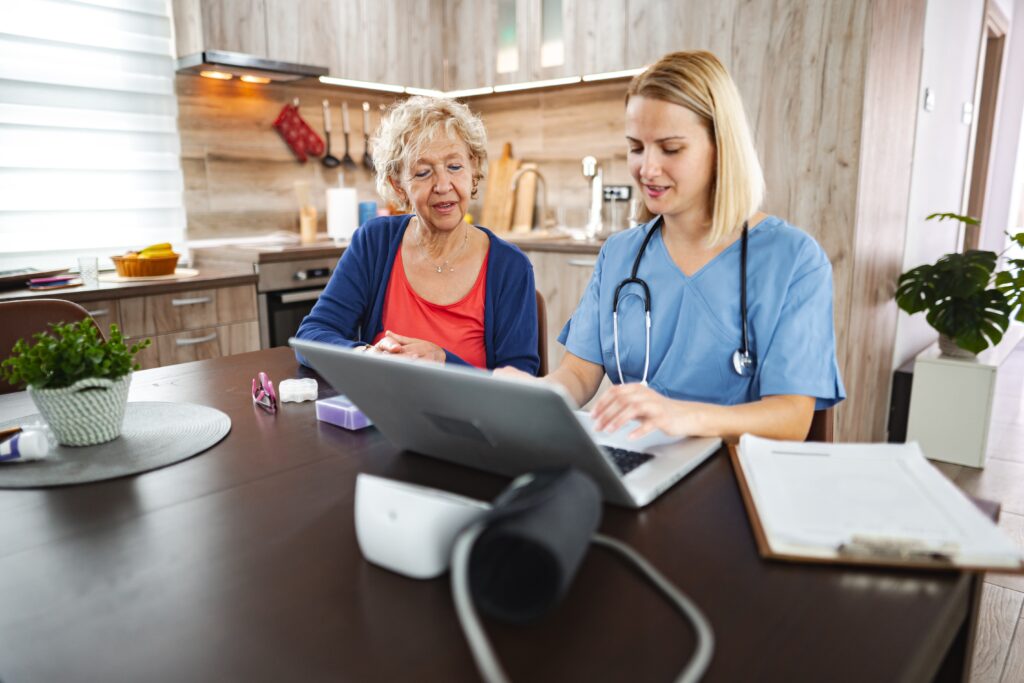
Smart home technology is at the forefront of revolutionizing technology in home health care and the home healthcare industry, offering a blend of safety, convenience, and independence for seniors and individuals with disabilities. Integrating technological advancements makes home environments more intuitive and responsive to inhabitants’ needs.
One of the critical features of smart home technology is the use of fall detection sensors that detect falls. These sensors automatically notify caregivers in case of a fall, providing timely assistance and reducing the risk of severe injuries. Alongside these sensors, smart locks enhance security by allowing seniors to manage home access, thereby reducing the risk of unauthorized entry.
Voice-activated devices enable seniors to control various home functions effortlessly, representing another significant advancement. These voice activated assistants promote ease of use and can be customized to cater to individual needs, making daily tasks more manageable and enhancing overall convenience. Moreover, real-time monitoring capabilities, including remote monitoring devices, allow caregivers to keep track of seniors’ health and movements, ensuring that they are safe and well-cared for at all times. Fitness trackers monitor vital signs, track physical activity, and provide real-time data that enhances patient care and health management.
Smart home technology maintains independence and ensures safety for seniors, transforming homes into supportive and protective environments. Whether it’s through motion sensors, robotic pets, or other digital tools, the future of home health care is undoubtedly intertwined with the continued evolution of smart homes.
AI in Home Health Care: Predictive Analytics and Personalized Care
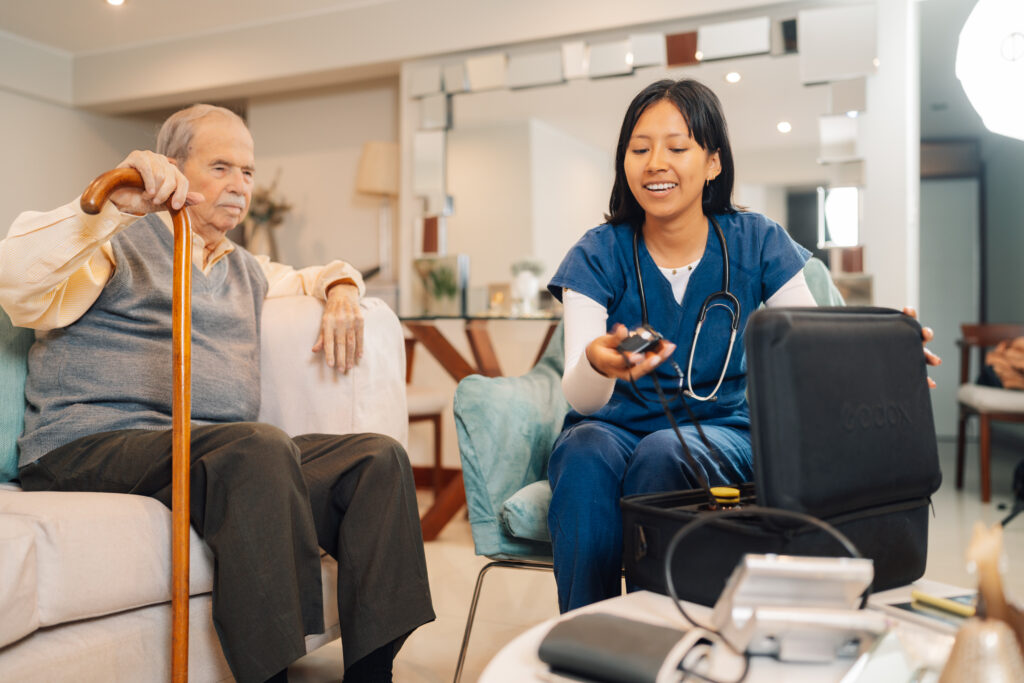
Artificial Intelligence (AI) is playing a pivotal role in advancing home health care services and health services by providing predictive analytics and personalized care. Through the analysis of historical and real-time patient data, AI systems can identify early warning signs of health deterioration, allowing for timely interventions and preventing potential emergencies. Additionally, AI systems enable early detection of potential health issues through the analysis of real-time patient data, facilitating timely intervention in managing chronic conditions.
AI models create personalized care plans by analyzing a variety of client data, including medical histories and social factors. This approach ensures that each patient receives individualized care tailored to their specific needs, leading to better health outcomes. Conversational AI assistants provide caregivers with immediate access to essential client information, improving decision-making and enhancing care quality.
Furthermore, AI-driven tools can automate caregiver scheduling by matching skills and preferences to patient needs, thereby enhancing patient outcomes and ensuring high-quality care. AI technology provides insights into workload patterns, helping reduce caregiver burnout and suggesting proactive retention strategies for routine tasks, benefiting both caregivers and patients.
The integration of AI in home health care signifies a significant step towards more efficient and personalized patient care, making it an indispensable component of the future of home health care.
Virtual Reality for Rehabilitation and Mental Health
Virtual reality (VR) is not just for gaming; it has found a profound application in home healthcare technology, especially in rehabilitation and mental health. VR provides engaging physical therapy exercises, making rehabilitation more interactive and effective for patients. Immersing patients in virtual environments with VR reduces loneliness and stimulates cognitive function, enhancing overall emotional well-being.
Virtual appointments play a significant role in maintaining continuity of care, particularly for individuals with mobility challenges or chronic health conditions.
For seniors, VR provides mental activity through cognitive challenges and emotional support. These virtual environments combat loneliness, stimulate memory, and promote relaxation, enhancing mental health.
Physical therapists use VR to create gamified therapy sessions, making rehabilitation more enjoyable and leading to better patient outcomes.
Using VR in home health care shows how advanced technology can improve physical and mental health, offering a promising future for patient care with VNA health group.
Remote Patient Monitoring: Extending Care Beyond the Clinic
Remote patient monitoring (RPM) is a technological innovation that enables healthcare providers to track patients’ vital signs, such as blood pressure, heart rate, and glucose levels, in real-time. RPM systems use wearable devices, sensors, and mobile apps to collect and transmit patient data, allowing healthcare providers to monitor patients remotely and respond promptly to any changes in their condition.
Remote monitoring has been shown to improve patient outcomes, reduce hospital readmissions, and enhance patient satisfaction, particularly for individuals with chronic conditions. By leveraging RPM, healthcare providers can extend care beyond the clinic, providing continuous support and monitoring to patients in their own homes. The use of RPM also enables healthcare providers to identify potential health issues early, facilitating early intervention and preventing complications.
Telehealth Services: Bridging the Gap in Home Health Care
Telehealth services have emerged as a vital component of home health care, bridging the gap between patients and healthcare providers. Telehealth platforms enable patients to consult with healthcare providers remotely, using video conferencing, phone calls, or messaging, reducing the need for in-person visits. This approach has been shown to improve access to care, particularly for individuals with mobility issues or those living in underserved areas.
By leveraging telehealth, healthcare providers can deliver high-quality, patient-centered care, addressing the unique needs of each patient and enhancing overall well-being. The integration of telehealth services with remote patient monitoring and other digital tools has the potential to revolutionize home health care, enabling healthcare providers to deliver seamless, coordinated care.
Care Coordination Apps: Seamless Communication Among Caregivers
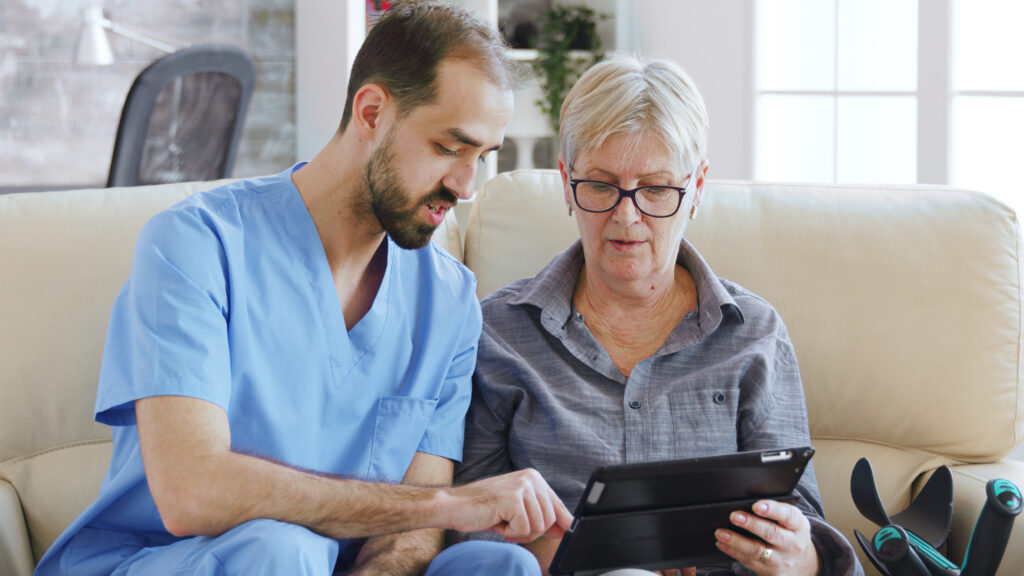
Care coordination apps are transforming how caregivers communicate and manage patient care by providing seamless real-time sharing of health updates, appointment schedules, and medication reminders. These apps ensure that all caregivers and family members are informed and up-to-date, thereby enhancing the overall quality of patient care.
Seamless communication facilitated by these apps can significantly enhance the patient’s experience and lead to better health outcomes.
Care coordination apps notify caregivers about important health and appointment reminders, reducing the risk of missed appointments and medication doses. Additionally, these platforms enhance collaboration among care teams by ensuring that all parties understand the patient’s care strategy.
Family caregivers benefit significantly from these apps, as they reduce the burden of administrative tasks and provide access to educational resources that help them understand treatments and caregiving techniques. By centralizing medical information and providing emotional support networks, care coordination apps make it easier to manage consistent and high-quality care for patients.
Medication Management Systems: Ensuring Adherence and Safety
Medication management systems are critical in ensuring that patients adhere to their prescribed health regimens and maintain their safety. Automated medication dispensers release scheduled doses, reducing the chances of missed or incorrect doses and supporting patient adherence. These systems remind patients to take their pills and alert them about missed doses, ensuring consistent medication management.
Healthcare professionals play a crucial role in utilizing these medication management systems to ensure adherence and safety. They can monitor patients effectively, provide improved care, and maintain accurate patient data, ultimately enhancing the overall quality of care delivered.
Caregivers can track medication schedules and receive notifications if a dose is missed, benefiting from these systems. Patients who take multiple medications or often forget their pills find these devices particularly beneficial. AI-powered chatbots or apps can be used to set medication reminders, complementing hands-on care and further enhancing patient safety and adherence.
Overall, medication management systems play a vital role in enabling patients and allowing patients to improve patient outcomes and ensuring the safe administration of medical care at home.
The Role of Interoperability in Home Care
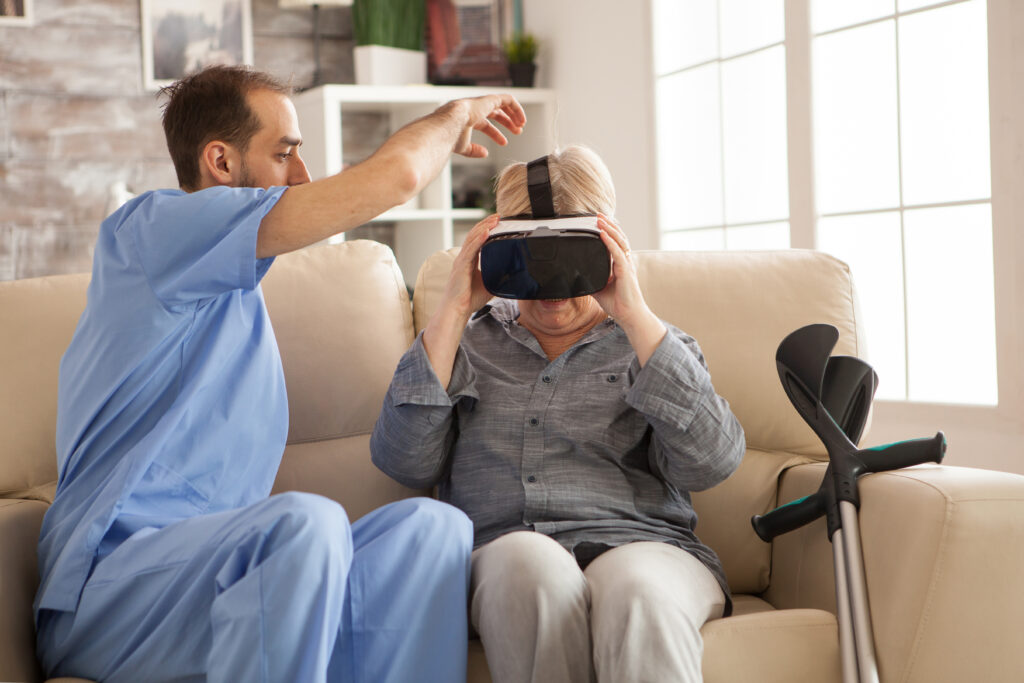
Interoperability is crucial in home health care as it facilitates secure data sharing across various healthcare systems, enhancing patient care and improving health outcomes. Governments are increasingly mandating interoperability to ensure that healthcare providers can efficiently share patient data, promoting better care coordination.
One of the main challenges in achieving interoperability is the existence of fragmented healthcare systems and data silos that impede seamless data exchange. However, effective interoperability reduces the administrative burden on healthcare providers by streamlining how patient data is accessed and shared, leading to more efficient and accurate care delivery.
There are potential concerns regarding the safety and efficacy of information technology devices used in home health care. The FDA must address these issues, especially as new technologies emerge that blur the lines between traditional medical devices and software applications.
Integrating remote patient monitoring (RPM) data with electronic health records (EHRs) and remote monitoring improves communication among healthcare providers and streamlines patient care. Ensuring interoperability also maintains the accuracy, consistency, and up-to-date information of patient data, which is essential for high-quality care.
Mobile Wound and Skin Care Imaging: Improving Healing Outcomes For In Home Care
Mobile wound and skin care imaging tools are revolutionizing the way caregivers track wound progression and skin health. These tools use secure, app-connected cameras and tablets to empower caregivers to document and compare wound conditions over time, helping detect infections or complications early.
Care teams securely share data images with nurses or specialists, enabling timely remote consultations and treatment plan adjustments. Advanced imaging apps with automatic measurement tools and annotations improve documentation accuracy and treatment planning.
By reducing the need for unnecessary clinic visits, caregivers can enable patients to receive better wound care in the comfort of the patient’s own home, thereby enhancing patient outcomes, patient experience, cost effectiveness, overall well-being, and virtual visits.
Wearable Health Monitors: Continuous Insight for Proactive Care
Wearable health devices provide continuous and real-time health insights at a rapid pace, making them invaluable in home health care. These devices track vital signs such as heart rate, oxygen saturation, and sleep quality, providing caregivers with immediate health information that supports early intervention and prevents hospitalizations. Additionally, wearable health devices monitor sleep patterns to provide real-time health data and enable proactive health management.
Data collected from wearable technology helps inform daily care routines, allowing caregivers to adjust hydration, activity levels, or medication timing based on real-time health data insights. Wearable devices that track physical activity and mobility patterns also help caregivers assess fall risk or evaluate recovery from surgery or illness, providing a valuable safety net.
Wearable health monitors complement hands-on assessments with around-the-clock biometric feedback, enhancing patient care and supporting proactive health management.
Smart Mobility Aids: Enhancing Safe Movement Within the Home
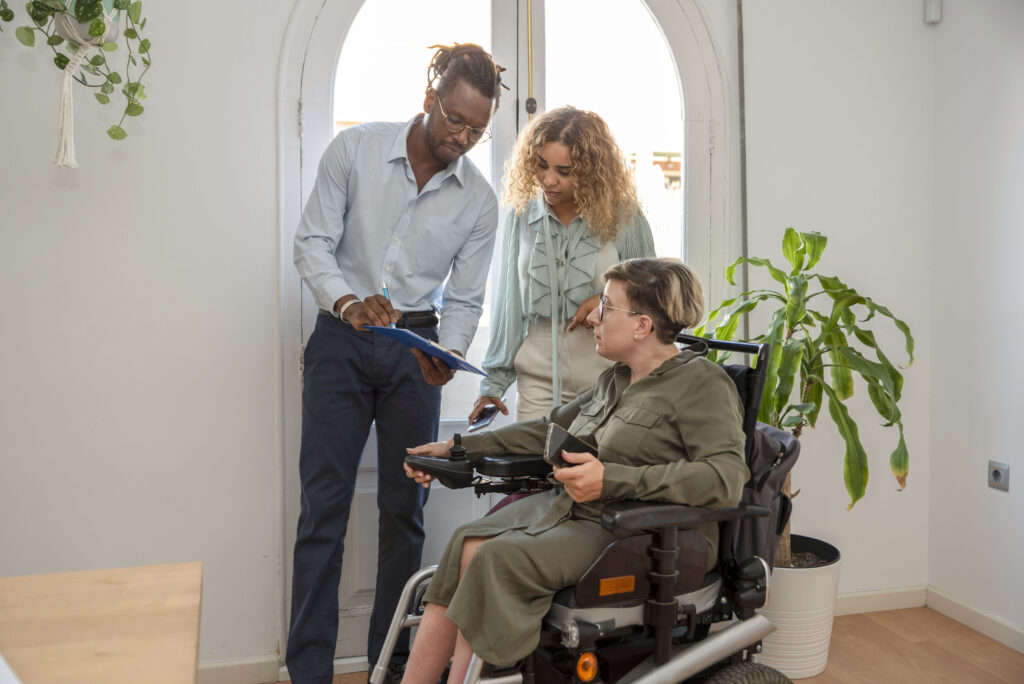
Smart mobility aids are enhancing safe movement within the home for seniors and individuals with mobility issues. Technology-enhanced devices such as walkers and canes now come equipped with fall detection, GPS tracking, and stability alerts, providing an extra layer of safety and support.
These devices help in-home caregivers by providing real-time data on gait, usage patterns, and potential hazards, allowing for timely interventions and coaching on safe walking techniques. Smart rollators with brake assistance or posture correction features further enhance safe movement and independence.
By integrating with caregiver apps, mobility devices ensure coordinated support when patients begin new rehab routines or experience mobility decline, helping prevent injuries and rebuild confidence and independence.
Summary
In conclusion, technological advancements such as smart home technology, AI, virtual reality, care coordination apps, medication management systems, interoperability, mobile wound imaging, wearable health monitors, and smart mobility aids are revolutionizing home health care. These innovations are enhancing safety, promoting independence, and providing continuous health insights, ultimately improving patient outcomes and quality of life.
As we look towards the future of home health care, it is evident that these technologies will play an increasingly vital role in transforming how care is delivered. Embracing these advancements will ensure that home health care services continue to evolve, offering safer, more personalized, and efficient care for our loved ones. Click here to learn more about in home care.
Frequently Asked Questions
How do smart home technologies enhance safety in home health care?
Smart home technologies significantly enhance safety in home health care by utilizing systems such as fall detection sensors and smart locks, which provide timely assistance and minimize unauthorized entry. This integration ultimately fosters a safer living environment for individuals receiving care.
What role does AI play in home health care?
AI significantly enhances home health care by analyzing patient data to predict health issues and develop personalized care plans, ultimately improving decision-making and reducing caregiver burnout.
How does virtual reality benefit seniors in home health care?
Virtual reality significantly enhances home health care for seniors by facilitating physical therapy, alleviating loneliness, stimulating cognitive function, and encouraging relaxation, ultimately leading to better mental health outcomes.
What are the benefits of care coordination apps for family caregivers?
Care coordination apps significantly alleviate administrative tasks for family caregivers, allowing them to focus more on their loved ones. They also provide real-time health updates and access to valuable educational resources, enhancing overall care management.
How do medication management systems ensure patient safety and adherence?
Medication management systems enhance patient safety and adherence by providing automated reminders, scheduling doses, and alerting caregivers to missed doses, thereby ensuring consistent medication compliance.


